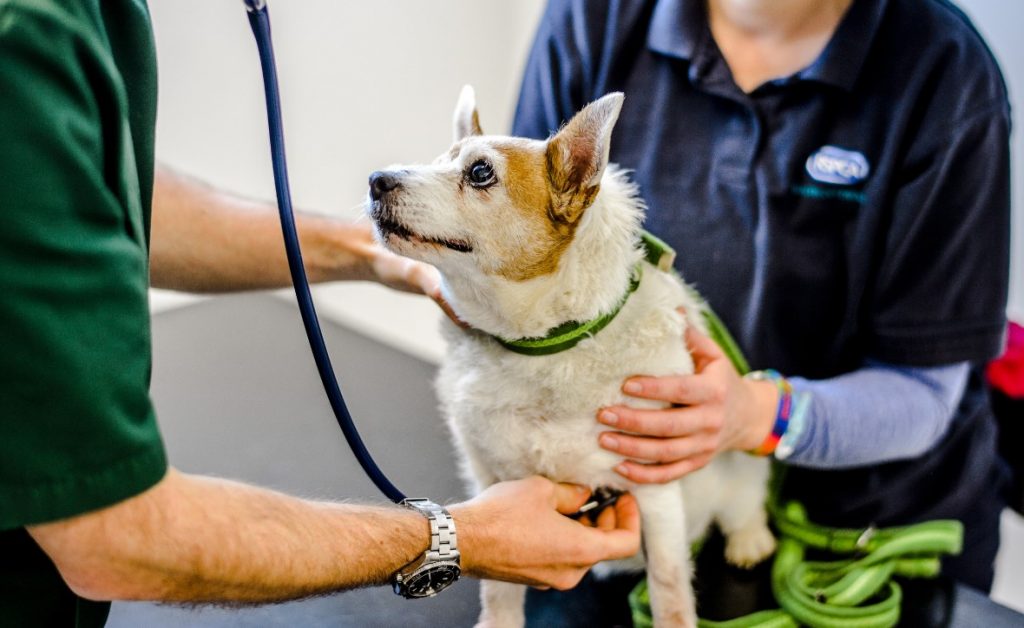
National Lost Pet Prevention Month

July is National Lost Pet Prevention month, which serves as a great reminder that as pet owners, it’s our responsibility to keep our pets safe.
While many circumstances are outside of our control, there are a few simple things that we can do to reduce the chances of your pet going missing.
Microchipping
If your dog or cat gets lost and isn’t wearing a collar, a microchip is vital for ensuring that they can get home safely. If your pet is microchipped, anyone who finds them can take them to a vet, who can scan the microchip and immediately access important information like your name, address, and telephone number.
Microchipping is a cheap and painless operation, where a chip the size of a grain of rice is injected under your pet’s skin. This step can also be vital in situations where there is any doubt over the ownership of the pet – should you need legal proof that your dog or cat belongs to you, a microchip registered with your details is the best way to go about it.
In fact, microchipping has been so successful at reuniting lost dogs with their owners that it’s been compulsory in the UK since 2016. If the reasons above aren’t compelling enough, you could face a fine of up to £500 if you fail to get your furry friend microchipped.
DNA protection
Recent developments in pet identification technology mean some services can now offer DNA identification as a whole new layer of protection for your canine pals. DNA Protected sells home DNA collection kits, and can store a record of your dog’s DNA which can be used for identifying lost or stolen pets. While this technology is a relatively new offering, it’s already been used successfully in disputes about ownership and is a good back-up option in rare cases where microchips are lost or tampered with.
Secure your garden and home

Dogs and cats that escape from home are often mistaken for strays, which can cause them to be separated from their owners. While cats are often harder to control, it’s important that any pet owner assesses their property to reduce the risk of their cat or dog doing a runner.
To start with, double check any fencing to make sure there are no holes that your pet can fit through, make sure it’s tall enough to prevent them from jumping over, and there’s nothing leaning against the fence that can give your pet a leg-up. You may also want to use rocks or chicken wire along the bottom of fences to prevent them from digging to freedom.
If you’re still struggling with an escaping pet, you may want to only allow them to leave the house when they can be supervised in the garden, and keep the doors shut when this isn’t possible.
Make sure they’re neutered
As well as being the only way to prevent unwanted offspring, neutering has lots of health benefits for your pet, and can also reduce their chances of getting lost.
Male cats and dogs are more likely to roam and seek out a mate when they haven’t been neutered, resulting in a higher risk of them getting lost or even hit by a car. Spaying also helps keep female cats and dogs safe, as being pursued by aggressive males can cause them to bolt – in these situations, they often end up far from home and may not be able to find their way back.

Find the right collar (and lead)
The right accessories are vital to keep your pet safe. Make sure your dog has a secure collar that fits snugly around their neck without being too tight – you should be able to slip two fingers underneath, between their neck and the collar. You can also order ID tags online, or buy one or from a local pet store – just make sure to include your contact details, and keep the information up to date. You can also write your phone number on the side of the collar as an extra layer of security in case they lose their tag. It’s also a good idea to keep your dog on the lead, especially in busy or dangerous areas.
Cats are a little trickier: sometimes, collars can be more of a hindrance than a help, and can cause injuries or even choking if they get stuck while exploring. Quick-release collars, which are designed to come undone if your cat gets caught on something, can be a good solution.
Basic training: “come” and “stay”

This one is for our dog lovers! (Cats are great but not always the most obedient pets.)
Teaching your dog two essential commands will drastically reduce the chance of them getting lost. It’s easy for dogs to get distracted or chase after things that catch their interest in parks or other busy places, but if your dog has been trained to reliably “come” and “stay”, it should be much easier to keep them safe. This basic training could even save your dog’s life by encouraging them to steer clear of cars or other dangers.
Pay attention
When you’re outside with your pet, keeping an eye out for dangers and distractions can mean that it’s easier to anticipate anything which might cause you to drop their lead, or give them a fright. Calmly navigating these situations will mean your pet is much less likely to run off and get lost.
Never leave your dog tied up in public, as this could put them in danger of slipping their collar or getting stolen.
What to do if you find a lost dog
● Every local authority has a dog warden service, and your first step should be reporting the lost dog to the council.
● Get in touch with local vets and rescue centres – they may have been contacted by the owner, and can scan them for microchip details.
● If the dog is wearing an ID tag and you feel safe doing so, use the information provided to try and get in touch with the owner.
● Check local Facebook groups and missing pet websites, such as Pets Located.
If you find a dog who looks injured, or is in danger, and you don’t feel comfortable approaching them, you can report them to the RSPCA by following this link.
What to do if you find a lost cat

Cats are more likely to roam and explore their local areas, so it’s not always clear if a cat is stray or a pet who has wandered too far. If it looks like they’re well groomed and of a healthy weight, it’s likely that they have an owner living nearby – especially if they’re comfortable coming close to you.
If you find a lost pet cat:
- Speak to your neighbours – they may know of someone frantically searching for their pet.
- Check and post on local Facebook groups.
- If the cat has an ID tag, and you’re comfortable doing so, call the owner using the details provided.
- Get in touch with your local vet or rescue centre who will be able to scan for a microchip.
- If the cat is sick or injured, contact the RSPCA.
If you suspect the cat is a stray
- Avoid feeding it unless it looks very underweight – cats are wiley creatures and they’re more likely to return to you if you give them food!
- Contact your local animal shelter who can advise you on what to do, and could even find the cat a new home if necessary.
- Print out a paper collar from the Cats Protection website – these are a handy way to identify if the cat has an owner.
What to do if your dog is lost
● Contact your Local Authority Dog Warden, who are legally responsible for stray dogs and may have picked yours up.
● Contact the microchip database (Petlog or Identibase are good starting points) to inform them that your dog is lost – they can notify you if anyone tries to change your dog’s chip details.
● Contact local vets, kennels and rehoming centres – someone may have found your dog and brought them in.
● Ask around your neighbourhood and in local shops, pubs and cafés – one of your neighbours may have seen your dog.
● Post a description of your dog – along with any distinguishing features – on local Facebook groups or missing pet websites such as Pets Located.
● Visit places where you normally walk your dog, as well as checking local buildings. If you’ve recently moved home, you may want to do the same in the area you’ve moved from.
● Most importantly, make sure that you act quickly – unfortunately, dog theft has been on the rise over the last few years, and acting fast is your best protection against the worst happening.
What to do if your cat is lost
There are a few things you can try to encourage your kitty to come home:
● Shake a box of their favourite biscuits or leave some of their favourite food on your doorstep.
● If your cat has a favourite toy, or a familiar smelling bed or blanket, try leaving this in your garden or outside your home.
● You may have more luck looking for your cat at night, especially if the weather is hot – wait until dark and then go out, calling your cat and rattling some food or treats.
If none of the above works, try the following:
● Search all the small spaces in your home or garden where your cat may have got stuck, and don’t forget to check sheds and garages.
● Talk to your neighbours – they may have seen your cat and will also need to check around their property.
● If your cat is microchipped, try contacting Petlog or Identibase – they can register your cat as missing.
● Call your local vet or rescue centres to see if anyone has found your cat and been in touch.
● Post a description of your cat – along with any distinguishing features – on local Facebook groups or missing pet websites such as Pets Located.
● Create flyers and put them in visible areas around your neighbourhood, encouraging people to get in touch with you if they see your cat.
● If you’ve recently moved home, you may want to do the same in the area you’ve moved from.
Categories
- Appeals (6)
- Events (9)
- News & Updates (67)
- Happy Tails (23)
- Past Appeals (84)
- Past Events (95)
- Support & Advice (46)
- Challenge Events (2)
Recent Posts
Related posts


Cotswold Raffle

Bruno's Birthday Bash

Remember a Loved One with a Flower in Our In Memory Garden

To report cruelty or an animal in distress call 0300 1234 999












































































